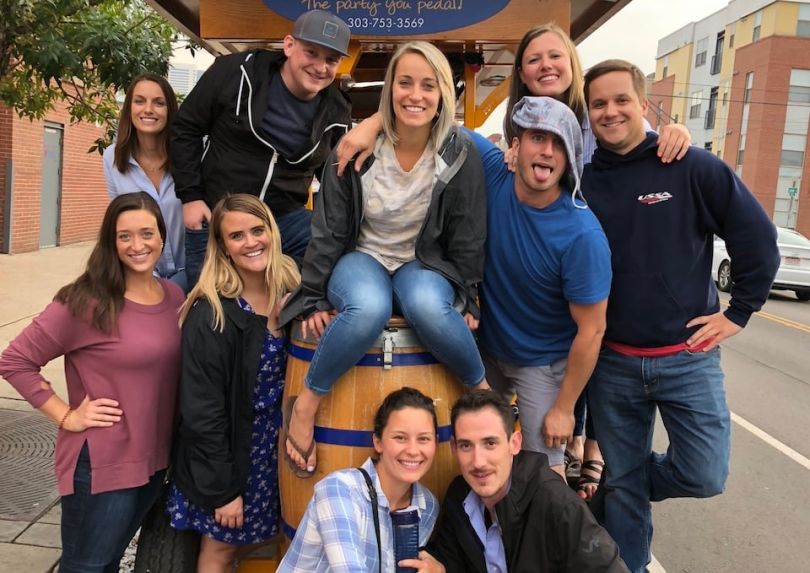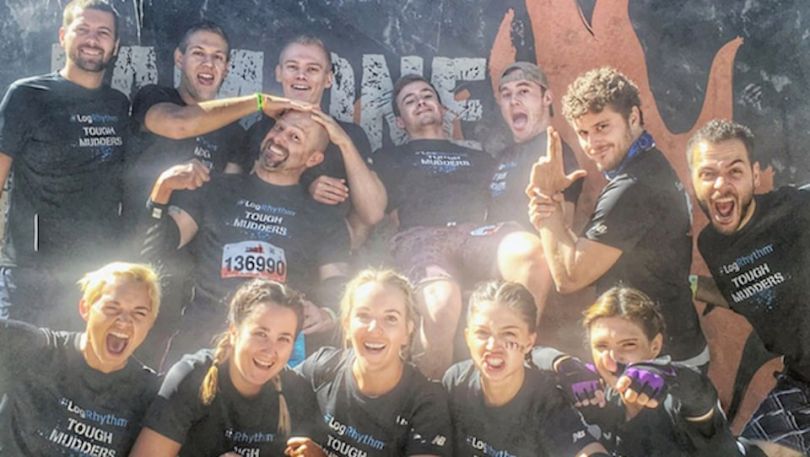When it comes to professional development, not all growth paths lead up the corporate ladder. In fact, sometimes the most meaningful opportunities come in the form of complete career makeovers. Rather than risk losing talented employees who are no longer passionate about their roles, some companies encourage team members to explore new — and completely different — areas of the business.
We talked to four local techies about their own lateral transitions and how their companies helped them chart new territory in their careers.
Denver-based adtech company Adtaxi works with media businesses and advertisers to implement performance-driven digital marketing campaigns. Director of Digital Product Hillary Hendrix explained how the company has helped her pursue her passions and career goals — beyond the role she was initially hired for.
What role were you originally hired for, and what position do you hold now? What prompted you to make the switch?
I was originally hired for the Adtaxi AdOps department, and the last position I held there was director of QA and ad tech. I made the move to our product team in July, and I currently hold the position of director of digital product. Moving to the product team has allowed me to focus on company-wide efficiency gains and top-priority products and projects. I am determined to find and develop tools that improve our internal processes and foster a positive client experience, so this is a perfect fit!
How has your company helped you transition laterally into this new role? What did that transition look like?
The transition has been seamless. I was able to work inter-departmentally with the product team before I made the jump, so I was familiar with the team and the existing goals. My previous and current manager worked in conjunction with me to ensure that all of my responsibilities were transitioned, as well as allowing me time to ramp up in my new role. They were both fully supportive and committed to this shift. I also received support from my previous and new team members. Whether it be taking over my workload or teaching me a new process, both sides allowed me to succeed through their combined efforts.
Adtaxi has given me the opportunity to advance my skill set and pursue an area of the business that I am passionate about with a tremendous level of support and encouragement.”
How has your career path changed as a result and what skills have you acquired so far in your new role?
Becoming a product director has completely changed my career trajectory. I am now on a different side of the business that allows me to do more of what I’m interested in. I have learned how to work in an Agile environment and will be attending Certified Scrum Product Owner training this fall.
I’m also able to improve upon my technical communication skills by working directly with our engineers. Perhaps the greatest part of my new role is the opportunity to help develop proprietary workflow platforms, gaining additional skills along the way. Adtaxi has given me the opportunity to advance my skill set and pursue an area of the business that I am passionate about with a tremendous level of support and encouragement, for which I am grateful.

Healthgrades provides users with an online platform for reviewing and researching healthcare professionals and hospitals in their area. Product Owner Kat Fassioli shared how she’s grown both vertically and laterally in the organization and how her company empowered her to do it.
What role were you originally hired for, and what position do you hold now? What prompted you to make the switch?
I was hired as an implementation specialist for the professional services department in 2015. In 2016, I was promoted to the client data lead position, and in 2018, I made the switch to product owner for the data engineering department. Making the switch was a pretty easy decision for me. The exposure to an Agile environment and the challenge of learning to be a PO were pretty enticing.
How has your company helped you transition laterally into this new role? What did that transition look like?
It happened fairly quickly. I shadowed my product manager for the first couple weeks, and then Healthgrades sent me to a formal Certified Scrum Product Owner (CSPO) training, so I could learn the essentials of Agile, Scrum and being a PO.
At that point, it was pretty much up to me to find my footing and my way of getting things done. Luckily, I already had relationships with some of the people in my new department, which made it a lot easier to lean on them when I had questions — and I still do. The learning process in this role is never-ending. It keeps me on my toes!
In previous roles, I had always just been involved in my own piece of the puzzle before handing my work off to someone else. In this role, I’m essentially managing the building of the entire puzzle.”
How has your career path changed as a result and what skills have you acquired so far in your new role?
In previous roles, I had always just been involved in my own piece of the puzzle before handing my work off to someone else. In this role, I’m essentially managing the building of the entire puzzle: understanding all the moving pieces and determining what work gets done when. Being involved in the product has given me visibility into software development and taught me out-of-this-world prioritization skills, how to lead a team and how to be as transparent as possible.

Signpost’s cloud CRM uses artificial intelligence to capture information about potential prospects and target them with automated marketing campaigns that drive conversions. Associate Product Manager Michelle Reger shared how her company encouraged her to take on new challenges and shift from a role in customer success to where she is today.
What role were you originally hired for, and what position do you hold now? What prompted you to make the switch?
I was originally hired as a junior account manager in 2014. I moved up to manager of customer success by 2016 and transitioned to an associate product manager in December 2017. I was nominated by an executive to apply for the position. I loved my job in CS but applied for the role because it was a good match for my skill set and opened up a new world of exciting career opportunities.
The most important part of my transition was that my manager let me fail.”
How has your company helped you transition laterally into this new role? What did that transition look like?
I was already familiar with every aspect of our product from my time in CS, but now I had to learn to become a product manager. My new manager was extremely involved in my transition — sending me reading material and articles on product management, setting up one-on-one meetings at least twice a week and assigning me meaningful projects to begin working on right away.
However, the most important part of my transition was that my manager let me fail. This sounds strange, but it was so reassuring to know that I didn’t have to be perfect right away as I learned how to become a PM. I learned so much faster by being hands-on, instead of only watching other people.
How has your career path changed as a result and what skills have you acquired so far in your new role?
I always thought I’d have a career in customer success until I took on the associate product manager role. I now see a successful future for myself in product management. My critical thinking, prioritization and problem-solving skills are much sharper already. Now I’m working on my wireframing skills, building requirements and learning SQL as quickly as possible.

LogRhythm’s SIEM platform helps businesses detect and respond to cyber threats faster and streamlines the day-to-day responsibilities of security professionals. After starting as a rep for the company’s IT service desk, Tim Padilla decided to change course and move into a more tech-focused role. Here’s what he had to say about that transition.
What role were you originally hired for, and what position do you hold now? What prompted you to make the switch?
I was originally hired for an IT service desk position and am now a member of the customer care organization as a professional services consultant. The main driving force for the switch was that, in IT, there is not as much exposure to the LogRhythm SIEM as a product. I wanted to accelerate my learning path around security-related technologies and increase my involvement in the LogRhythm brand.
How has your company helped you transition laterally into this new role? What did that transition look like?
LogRhythm repeatedly communicates to us as employees that we are encouraged to explore other departments if there is a field or area that we feel would provide an opportunity to excel, advance and produce our best work. The transition generally involves initial communication of interest on our part to our supervisor or manager, and we are directed to apply via the careers page on the LogRhythm site. During the application process, and if applying is likely to result in an offer, a conversation may take place between management teams of the respective departments in order to establish a transition plan where responsibilities of the previous role are phased out and preparation for the new role begins.
From the day I walked into LogRhythm, I’ve forgotten what boredom looks like and I don't care to remember.”
How has your career path changed as a result and what skills have you acquired so far in your new role?
For me, pivoting from an IT role to a security professional role for a SIEM product led to extended hours of studying, testing, researching and some reclusion as I gained familiarity in a new direction — all of which resulted in apprehension, more than a few sleepless nights and some of the most rewarding opportunities to learn and grow that I’ve experienced thus far. Increased agility in both established and emerging technologies (Linux, Elasticsearch, Regular Expression and Kibana, to name a few) has pushed me to swim in the sink-or-swim world of tech. From the day I walked into LogRhythm, I've forgotten what boredom looks like and I don’t care to remember.




